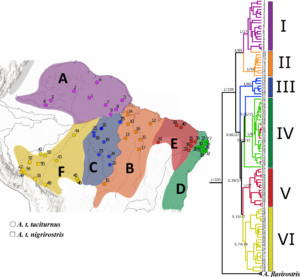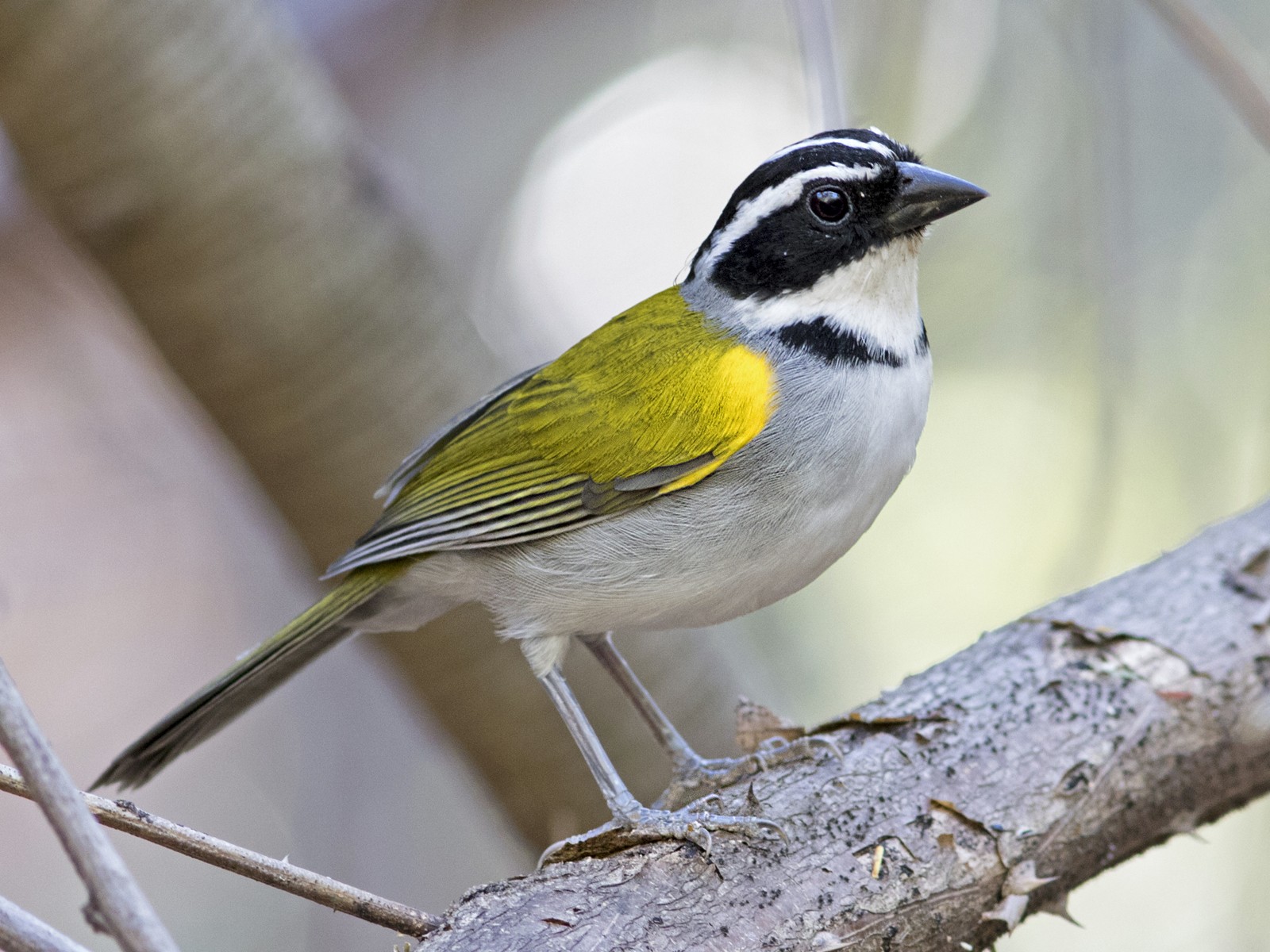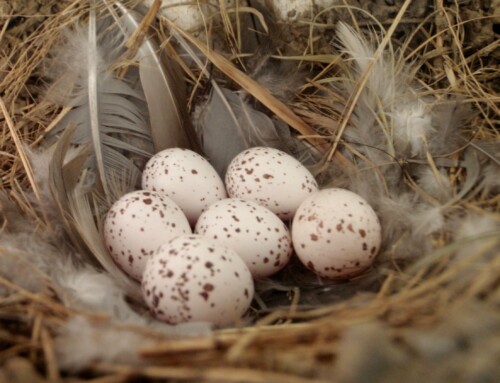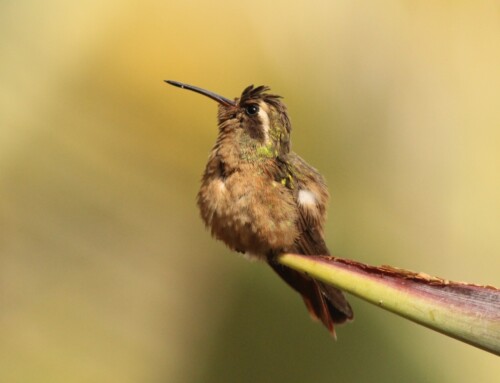 LINKED PAPER
LINKED PAPER
Evolutionary history of the Pectoral Sparrow Arremon taciturnus: evidence for diversification during the Late Pleistocene. Carneiro de Melo Moura, C., Fernandes, A. M., Aleixo, A., Farias Pereira de Araújo, H., de Freitas Mariano, E., & Wink, M. 2020. IBIS. DOI: 10.1111/ibi.12813 VIEW
A string of A, T, G and Cs. That is all you need to reconstruct the evolutionary history of a species. The simplest approach is to compare the DNA sequences of several individuals and count the differences. Suppose that individual 1 has the sequence ATTG, individual 2 ATTC and individual 3 ATGA. You can easily see that the first two individuals differ by one DNA-letter. In addition, both individuals differ by two letters from the third individual. Based on this information, you can conclude that individual 1 and 2 are more closely related to one another than they are to individual 3. Now apply this approach to a much longer DNA-sequence – for example, the mitochondrial gene ND2 is about 1000 DNA-letters long – and you can build an evolutionary tree where closely related individuals will cluster together on the same branches. Next, you can apply a molecular clock to figure out when different branches on this tree went their separate ways. For mitochondrial genes, this molecular clock has been calibrated to ca. 2 percent divergence per million year (although there is some variation, Nabholz et al. 2016). Now that we covered the basics of molecular phylogenetics, we can apply it to an actual bird species: the Pectoral Sparrow (Arremon taciturnus).
Six lineages
The Pectoral Sparrow is a small passerine that can be found throughout most of Amazonia and northeastern Brazil, as well as along the base of the Andes in Colombia, Venezuela, Bolivia and Peru. Carina Carneiro de Melo Moura and her colleagues collected samples from 107 individuals across this range. Next, they sequenced the mitochondrial genes ND2 and cytb on which they applied the approach described above. However, instead of just counting the differences in DNA-letters, they implemented a molecular model that takes into account the variation in mutation rate across the genes (not all mutations are equally likely to occur). These genetic analyses revealed an evolutionary tree with six separate lineages. Assuming a molecular clock that ticks at roughly 2 percent divergence per million year, the researchers calculated that these lineages originated between 570,000 and 350,000 years ago.

Figure 1. Phylogenetic relationships of the Pectoral Sparrow inferred using the two mitochondrial genes (cyt‐b and ND2). Colors on the map correspond to respective lineages in the evolutionary tree and the numbers correspond to sampling sites.
Ecology and rivers
After figuring out when these six groups evolved, we can try to elucidate how it happened. First, take a closer look at the distribution of these lineages. You might have noticed that the geographical boundaries between the groups correspond to several Amazonian rivers, such as the Tapajós and the Branco. Could it be that the origin of these rivers drove the diversification of the Pectoral Sparrow? Not exactly, because these rivers started crisscrossing the South American landscape between 9 and 2.5 million years ago (Hoorn et al. 2017). The rivers certainly prevent neighboring populations from mixing extensively, but they are not the main cause for the origin of these lineages. Rather, the researchers suspect that ‘past ecological barriers must have played a role in accounting for the observed phylogeographical structure.’ During the glacial cycles of the Pleistocene, forests contracted and expanded (Arruda et al. 2018). The Pectoral Sparrows became isolated in forest fragments during contraction phases and followed the spreading forests during the expansions. At rivers, however, the birds could not disperse further, giving rise to the geographical boundaries between the six lineages. Amazing what you can deduce from a string of A, T, G and Cs.
References
Arruda, D.M., Schaefer, C.E.G.R., Fonseca, R.S., Solar, R.R.C. & Fernandes‐Filho, E.I. (2018). Vegetation cover of Brazil in the last 21 ka: new insights into the Amazonian refugia and Pleistocenic arc hypotheses. Global Ecology and Biogeography 27: 47– 56. VIEW
Hoorn, C., Bogotá‐A, G.R., Romero‐Baez, M., Lammertsma, E.I., Flantua, S.G.A., Dantas, E.L., Dino, R., do Carmo, D.A. and Chemale, F. (2017). The Amazon at sea: onset and stages of the Amazon River from a marine record, with special reference to Neogene plant turnover in the drainage basin. Global Planet Change 153: 51– 65. VIEW
Nabholz, B., Lanfear, R., & Fuchs, J. (2016). Body mass‐corrected molecular rate for bird mitochondrial DNA. Molecular Ecology 25: 4438-4449. VIEW
Image credits
Top right: Pectoral Sparrow (Arremon taciturnus) | Caio Brito | eBird
Blog posts express the views of the individual author(s) and not those of the BOU.
If you want to write about your research in #theBOUblog, then please see here




